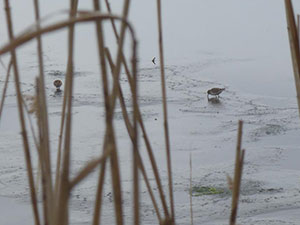Benthic Biodiversity
Our Projects
Participants
MRRI, Natural Resources, NJSEA, Montclair State University, New Jersey Institute of Technology
Problem
There is a need to assess how habitat and water quality improvements during the last decade have affected benthic communities at District wetland sites. Some wildlife managers are concerned that because of the long legacy of sediment contamination in the District, new wetland enhancements may attract healthy wildlife which ingests contaminated fauna. However, there is no hard evidence showing that this is the case since contaminant loads of benthic invertebrate organisms in the Meadowlands District have never been published and seldom measured and most importantly no conclusive evidence of significant damage to fauna in the Meadowlands has been documented.
Objectives
One objective is to establish a baseline for contaminant load in the benthic communities. The other objective is to examine the current diversity and population density of invertebrates at Meadowlands sites previously sampled several years ago. The results of the two parts of this study will allow for informed decision making on natural resources management in the Meadowlands.
Strategy
Two wetland sites (Mill Creek Marsh and Harrier Meadow) will be sampled to determine population diversity and density that have had those parameters measured in 1999-2000. Three wetland sites (Riverbend Marsh, Anderson Creek Marsh, and Secaucus High School Wetland Enhancement Site) will be measured for benthic contaminant loads to determine current levels of contaminants reaching fauna consuming members of the benthic community.
Activities
- Easure benthic taxonomy, diversity, and abundances from two sites measured for the same parameters in 1999-2000
- Measure contaminant loads of benthic organisms from three established wetland sites
- Determine the contaminant levels in sediments from where the benthos sample were collected
- Measure physical and chemical parameters from where benthos and sediment samples were collected
Deliverables
- An updated version of the benthic population density and diversity studies from 1999-2000 at Mill Creek Marsh and Harrier Meadow
- Benthos identification and determinations of major and trace elements and persistent organic pollutants in sediments and benthic invertebrates from Riverbend Marsh, Anderson Creek marsh, and Secaucus High School Wetland Enhancement Site
Acknowledgement
- The project is funded by EPA Grant No. CD-96285100-0.


